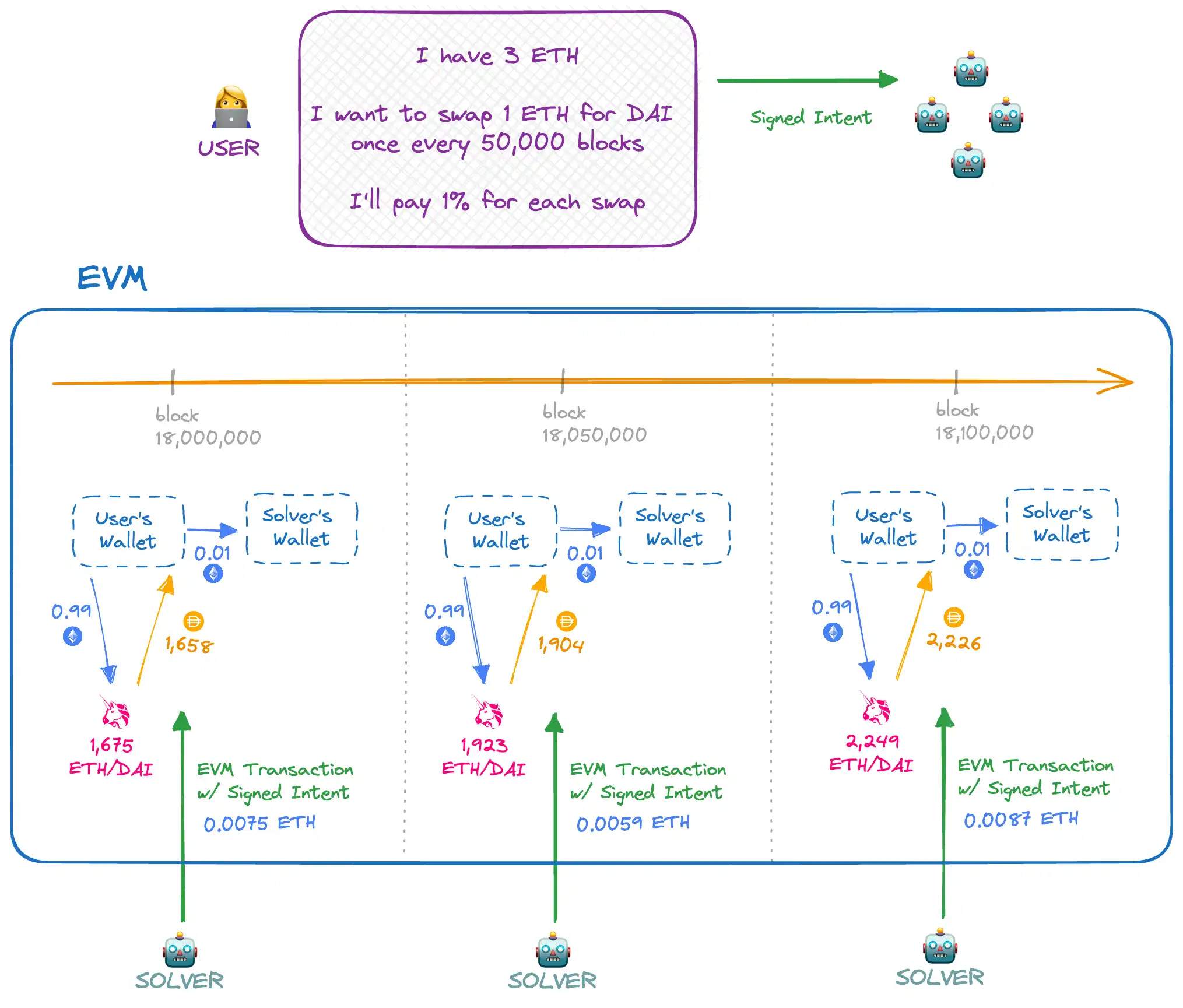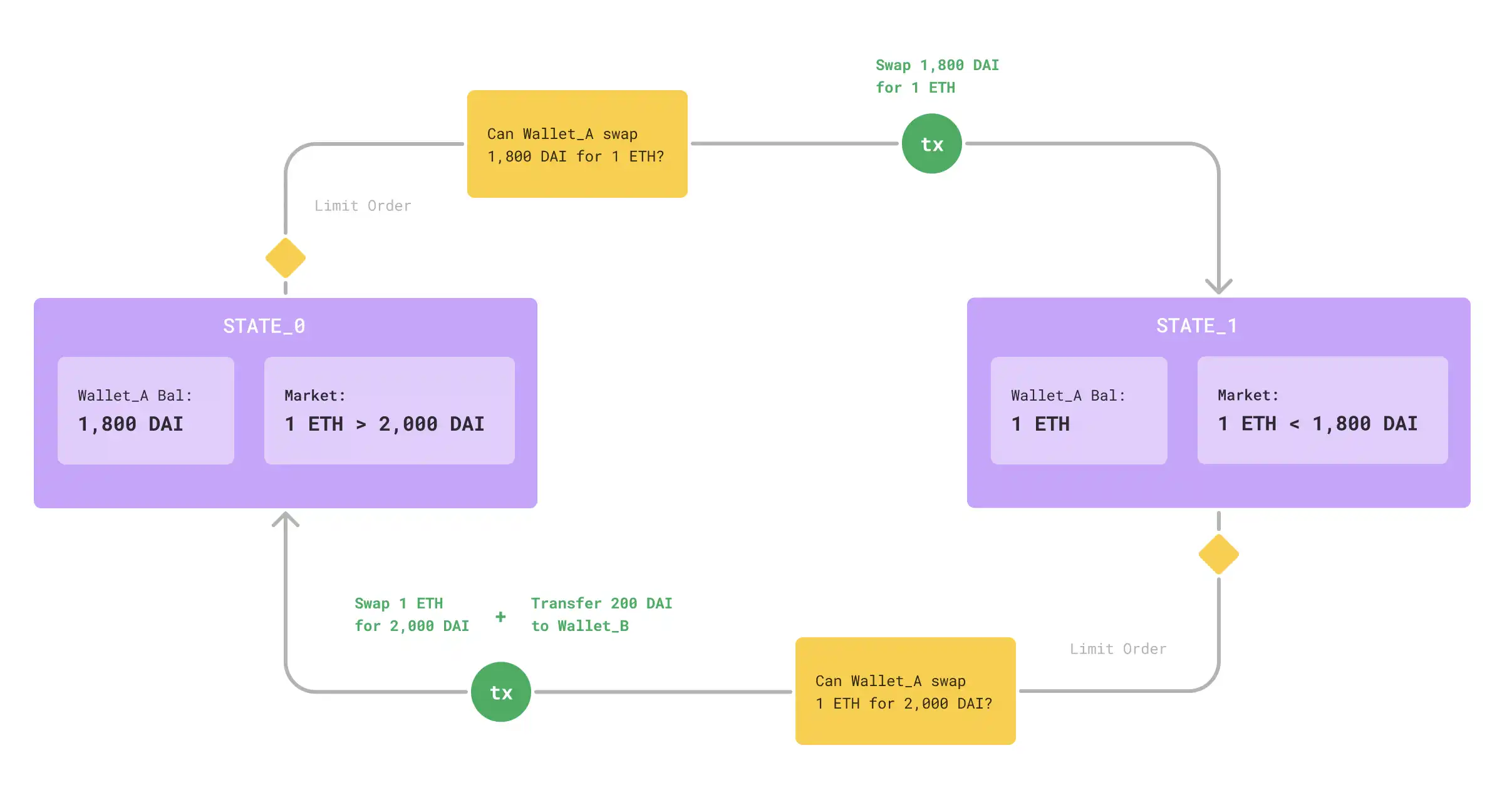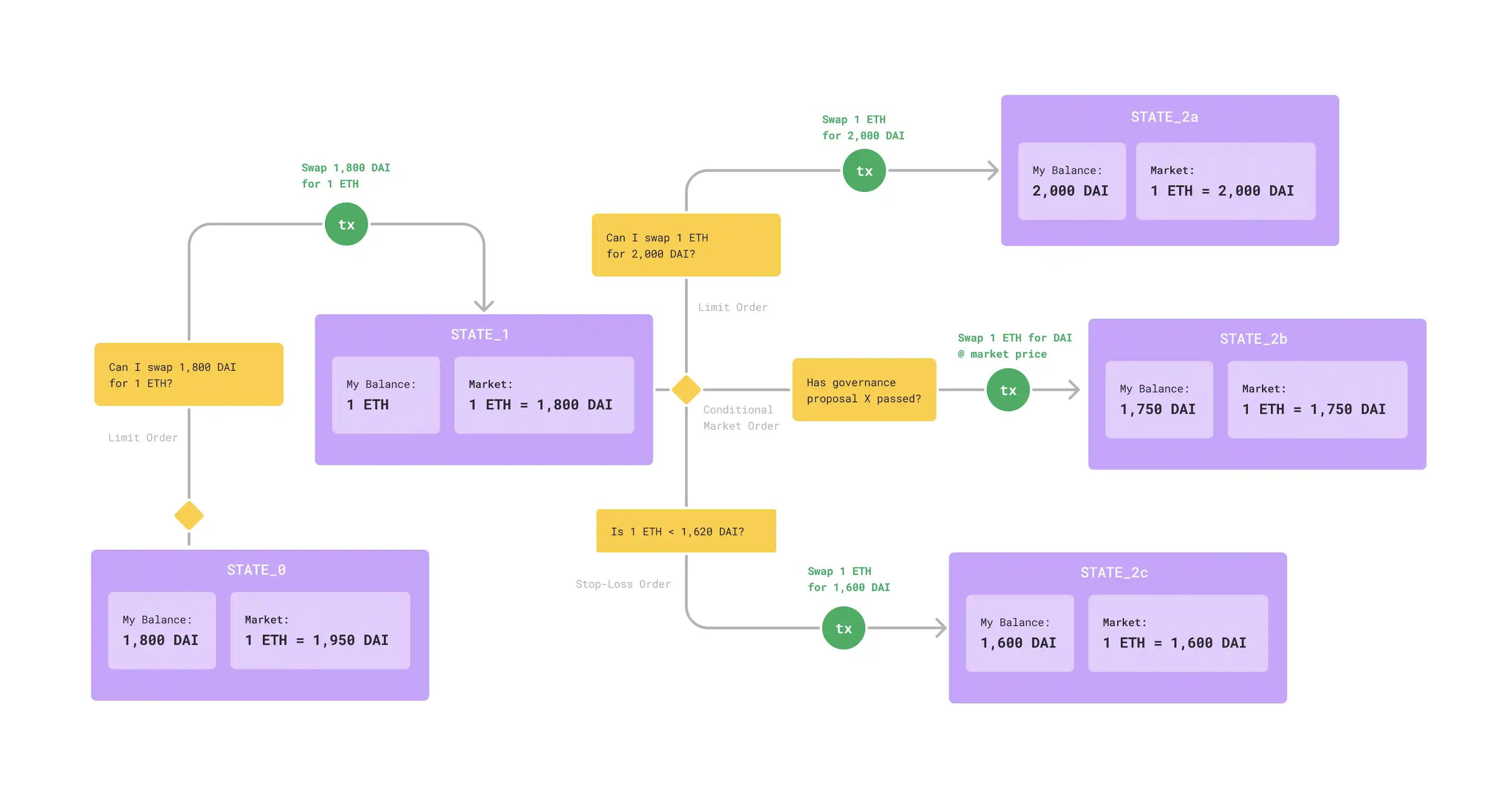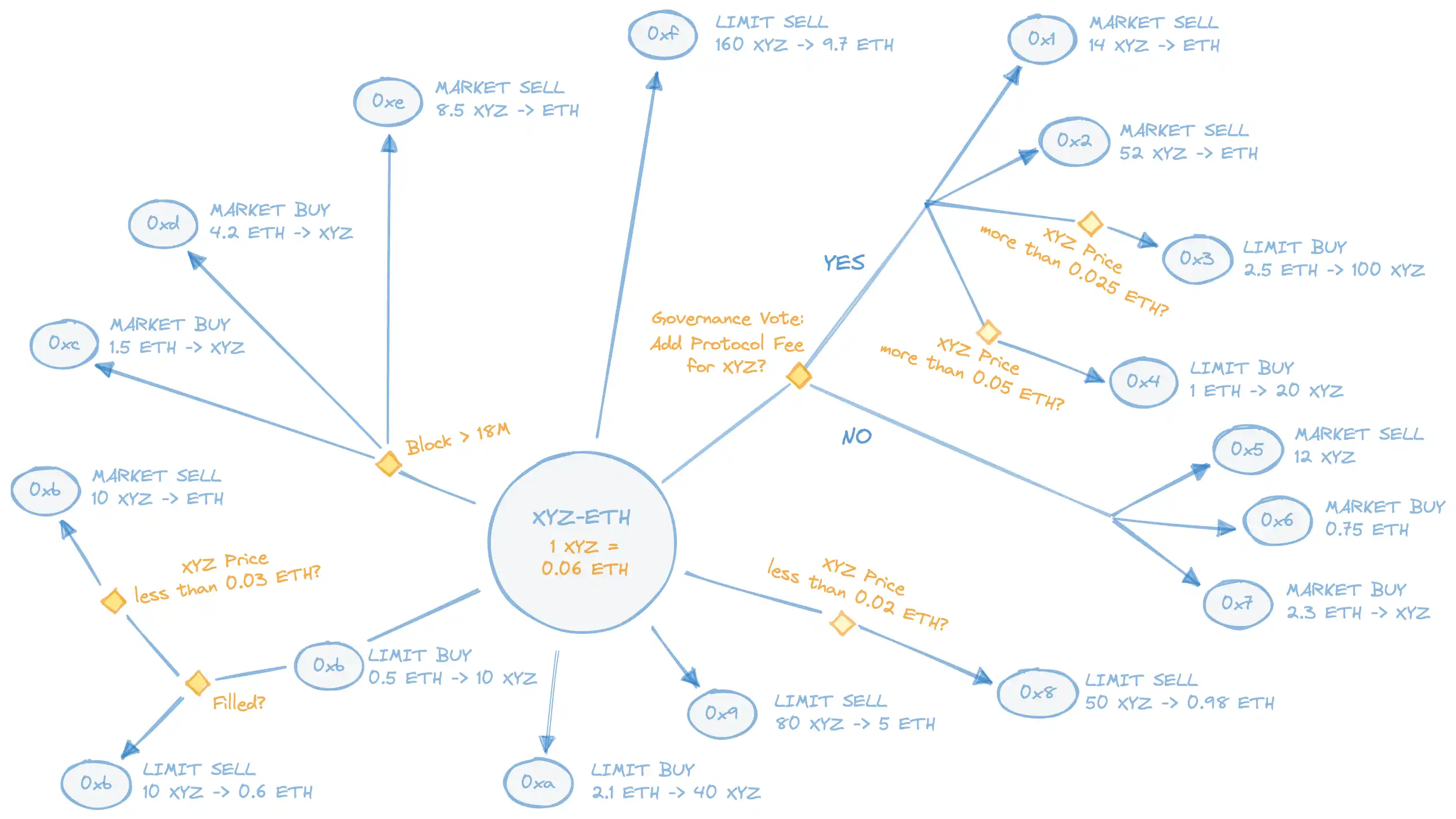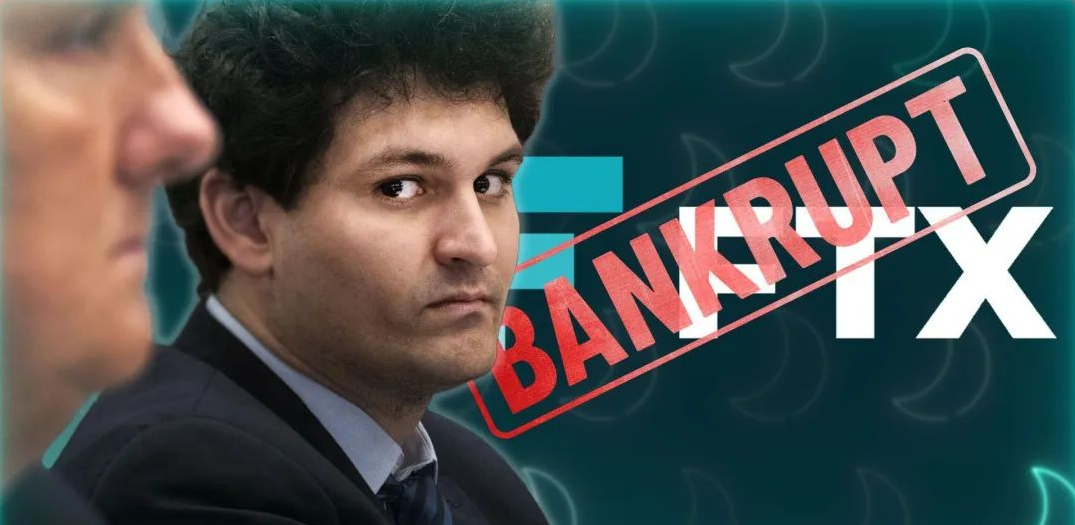Improving user experience and reducing interaction steps How can intent-based transactions support the next wave of Web3 narratives?
How can intent-based transactions support Web3 narratives by improving user experience and reducing interaction steps?Author: Mike Calvanese and the team at Brink; Translation: Luccy, Joyce, BlockBeats
This is the first part of a three-part series on Intents written by Mike Calvanese and the team at Brink.
Intents are rapidly gaining popularity as one of the many user experience improvements achieved through account abstraction. They were also a hot topic discussed by Vitalik in his speech at EthCC. Intents allow users to define the on-chain outcomes they expect and outsource the technical work to third-party solvers that interact directly with networks and protocols. Ultimately, the abstraction layer will make Web3 applications function like regular applications. This reduces the existing learning curve and will attract millions of new users.
The paradigm shift towards Intents means that future users will not need to worry about submitting transactions, paying gas fees with ETH, mitigating MEV on AMMs by setting slippage limits, aggregating token swaps for optimal path routing, or bridging assets between networks.
- MEV Development Full Analysis From Zero-Sum Game to Separation of Powers
- In-depth discussion on the whole-chain game and the representative work of the race, Dark Forest.
- LianGuaiWeb3.0 Daily | Binance Futures Launches Copy Trading
A simple way to understand Intents is to see them as declarative expressions of what users want to happen, rather than imperative steps on how to achieve something.
intent (declarative): I will pay 20 bucks for a Hawaiian pizza at my door by 8pm
tx (imperative): hop on to ur scooter, go to Domino's around the corner, order item#4, and bring it. here is your 20 bucks; 18 for pizza, and 2 for gas.
— Can Gurel (@CannnGurel) May 29, 2023
Current Intents
Intents are not a new concept.
Prior to the emergence of Uniswap and AMMs, Ethereum projects like EtherDelta and 0x offered order books based on Intents. NFT markets have been using signed Intents for NFT listing and quoting for years, and updated systems like CoW Swap and UniswapX now provide more advanced Intents-based infrastructure for ERC20 limit orders.
Looking at the current landscape, the word “Intents” seems synonymous with “limit orders” because the only widely supported Intents in Web3 today are “I want X, and I’m willing to pay Y.” The Intents architecture for limit orders is often simple and focused on one goal: exchanging at a more favorable price than the current market quote. Users sign their limit order Intents, and solvers find paths to “fill” the signed Intents using AMMs, other liquidity sources, or, in some cases, other Intents. Solvers have an incentive to find paths because they can keep the remaining portion as additional revenue once the user’s Intents are fulfilled.
Limit order Intents architecture
Many systems have already established scenarios that support the use of limit orders, but as more advanced Intents tools are developed, we will see more general architectures that enable more powerful use cases.
Examples of general Intents systems include Anoma and Flashbots SUAVE, both of which are currently under active development. They will provide a Gossip layer for Intents, where users broadcast their signed Intents to Gossip nodes. These chains will be specific to Intents and facilitate the connection between users signing Intents on different networks and solvers executing them.
Another example is Brink, a solution that creates composable Intents. Brink allows users and developers to build, sign, and settle condition-based Intents on multiple EVM-compatible networks.
The Future of Intents
Let’s explore several ways in which Web3 Intents go beyond simple limit orders. Here are some new concepts:
Conditional Intents: Allow the execution of an action when one or more conditions are met.
Sequential Intents: Express the desire to take repeated actions.
Multi-step Intents: Open one or more new Intents when resolving an Intent.
Intents Graph: A path formed by a set of related Intents.
Conditional Intents
Current Web3 applications only have one type of conditional Intents: limit orders. In the future, we will have Intents that can be composed of any number of conditions of any state, resulting in various operations.
If you are a Web3 user, you have made many conditional decisions in the past that can be expressed as Intents, signed, and delegated to third-party solvers, such as:
Price Threshold: “If the price of A/B is lower than X, swap B for A.” In traditional finance (trad-fi), this is called a “stop loss.”
Governance Decision: “If a governance proposal I don’t support is passed, sell token A.”
Wallet Balance: “If my hot wallet ETH is insufficient, transfer more ETH from my cold wallet to my hot wallet.”
Elapsed Time/Block Count: “If more than X blocks have been mined, transfer ETH to the recipient.”
All of these can be signed as a single Intent. Solvers will monitor these Intents and take action on behalf of the user when the conditions are met. Users sign these conditions, which will force the solver to check the on-chain state to prove the condition.
Intents can be expressed with any number of conditions, for example:
I want to buy 2 ETH with DAI when the following three conditions are met: 1) ETH price is below $1,750, 2) the average DAI yield for lending ETH is high, and 3) a whale wallet I’m following has purchased at least 10 ETH in the last 24 hours.
When complex state conditions are met with any number of conditions, users will be able to express Intents to buy, sell, stake, transfer, or bridge assets, all with just one signed Intent.
Sequential Intents
Intents will provide a protocol-agnostic way to execute sequential actions. While today’s Intents often involve a single signed corresponding to a single operation (limit order), we will soon see the emergence of sequential Intents.
Users today take sequential actions by depositing funds into protocols or exchanges, and here are some examples:
Dollar-cost Averaging: “Buy ETH with DAI at market price once a month.” Users typically use CEXs like Coinbase to accomplish this task.
Compound interest (also known as re-staking): “Withdraw the rewards from A, exchange them for B, and then re-stake.” This is a cumbersome process that involves multiple transactions and interactions with multiple DeFi protocols.
Hot wallet recharge: “I have a cold wallet with 50 ETH in it. Whenever the ETH balance in my hot wallet falls below X, transfer Y ETH from my cold wallet to my hot wallet.” This requires many independent transactions.
Payment flow: “Transfer X USDC to the receiving address every two weeks.” Streaming payment applications support this, but require users to deposit assets into smart contracts.
Market-making: LP positions based on AMM essentially follow the same pattern as two opposite swaps, which continue in an infinite loop: “When the price of A/B exceeds X, exchange A for B; when the price of A/B is below X, exchange B for A.”
From these examples, it can be seen that today’s continuous operations require users to deposit in specific protocols and submit many transactions. With Intents, users can express their desired continuous operations through a single signature.
Cost averaging is a perfect example. Users who intend to average costs (repeatedly buying or selling over time) can express it as a signature that allows 1 ETH to be exchanged for DAI at a price provided by an ETH/DAI TWAP oracle that is difficult to manipulate, every 50,000 blocks (approximately once a week on the Ethereum mainnet), with a fee of 1% (0.01 ETH). The solver will monitor this Intents and check:
1. Does the user’s account have 1 ETH available for exchange?
2. Has 50,000 blocks been mined since the last exchange?
3. Is 1% (0.01 ETH) enough to pay for the gas cost of the swap?
4. After the solver pays for the gas of the swap, is there still enough ETH left to pay for the solver’s operational costs, which may include the risk of losing PGA (Priority Gas Auction) or any other fees? Is the potential profit worth it for the solver?
If all of these pass, the solver will send a transaction to fulfill the user’s ETH→DAI exchange Intents. As long as the user’s account has enough ETH, the solver can monitor the “cost averaging” Intents with a single signature and generate a continuous flow of transactions. Users can get what they want without directly interacting with the EVM network or specific protocols.
Cost-averaging Intents architecture
Market-making is another example of a continuous and potentially infinite operation that can be delegated to a solver using Intents. A user who wants to market-make ETH/DAI may create an Intents that allows for exchanges of DAI→ETH at a price of 1,800 ETH/DAI or lower, and exchanges of ETH→DAI at a price of 2,000 ETH/DAI or higher. Through this Intents, the user attempts to lock in a profit of 200 DAI per exchange when the market fluctuates between the 1,800 and 2,000 ETH/DAI price points.
Market Making Intents
It can be imagined as two mutually limiting limit orders, where one opens when the other is executed, and vice versa. Users can sign a single exchange intention at each price point. As long as the market continues to fluctuate at these price points, the solver theoretically can execute countless orders like this without any action required by the user.
Multi-step Intents
Intents can consist of multiple steps. You can think of these intentions as a state machine, where each transaction transitions from the previous state to a new state, and the new state transition depends on the conditions defined by the previous state.
A simple example of multi-step Intents is the classic traditional financial order arbitrage trading. These orders may vary in complexity, but simple versions are common in traditional financial trading applications. With the composability and multi-step Intents based on Web3, we can perform very powerful order arbitrage trading.
A Web3 order arbitrage trading Intents can be expressed as: “I want 1 ETH, and I am willing to pay 1,800 DAI. Once I have paid 1,800 DAI and have 1 ETH, I am willing to hold this 1 ETH until I can sell it at a price of 2,000 DAI. If the ETH/DAI price falls below 1,620 DAI, I want to reduce my losses by selling this 1 ETH, and in this case, I will accept 1,600 DAI and pay a 20 DAI fee to the solver. If I still hold this 1 ETH when [random governance proposal] is passed, I want to sell this 1 ETH at the ETH/DAI price on the market and give 10% of the proceeds to the solver.”
“Bracket Order” Intents
This is a relatively simple 3-step order with some condition triggers, but these types of orders can be much more complex.
Intents Chart
The relationship between different user Intents can form an Intents chart. These charts represent the combination of conditions and actions defined by users, resulting in exchanges, asset transfers, or other on-chain behaviors. All the previous Intents examples are actually just names of specific graphical arrangements.
Just like limit orders represent the current state of market liquidity, Intents charts can not only represent the current state but also represent liquidity under many different potential future states based on conditions.
For example: Users trade XYZ and ETH in a fictional market. Intents representing the purchase and sale of XYZ under various conditions, such as the results of governance proposals, mining of specific blocks, the rise and fall of market prices, or whether other Intents have been fulfilled.
Intents graph for fictional XYZ-ETH market
This diagram represents the existing liquidity and the potential liquidity in future states. The Intents diagram can span across markets and even across different chains.
Conclusion
With new developments happening every day, Intents is making progress.
We will continue to update Blocking; if you have any questions or suggestions, please contact us!
Was this article helpful?
93 out of 132 found this helpful
Related articles
- IOSG Panoramic scan of on-chain data tools track.
- Who are the top 25 revenue accounts on friend.tech?
- Evening Must-read | Can Web3 Social Networking Generate a New Killer Application?
- Which public security authorities in China have jurisdiction over virtual currency exchange cases?
- Opinion friend.tech may have initiated a return to the essence of SocialFi.
- 10 Reasons Why Cryptocurrencies Can Rise 10 Times in the Next Few Years
- Stablecoin’s Snowball May Lead Crypto to the Mainstream


